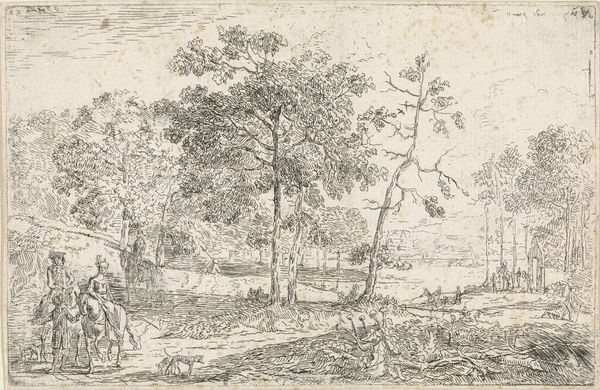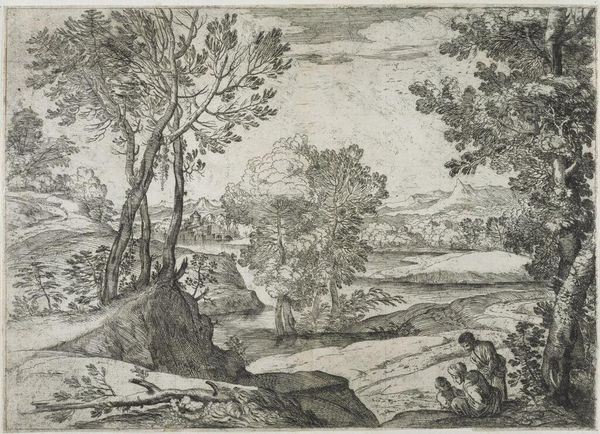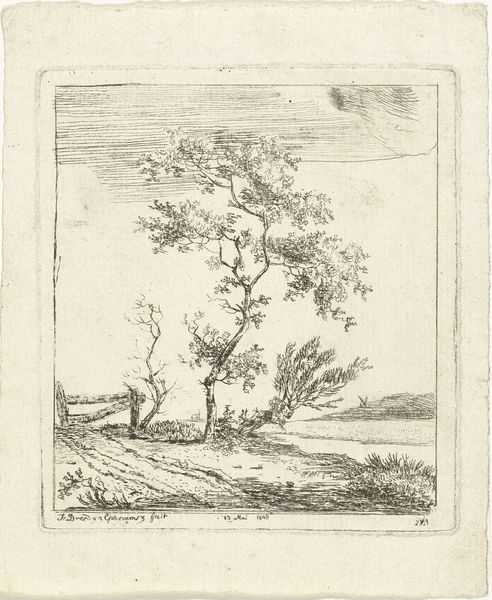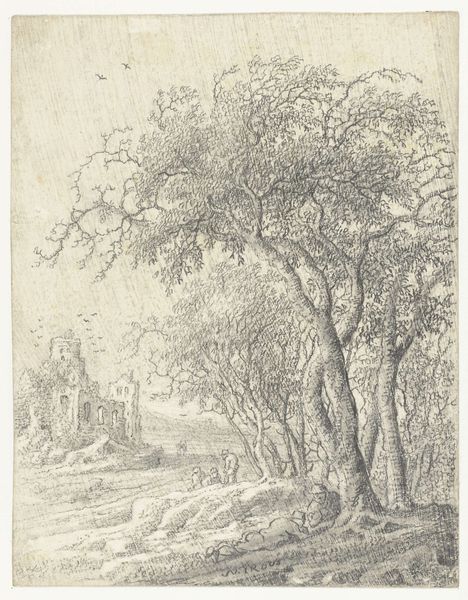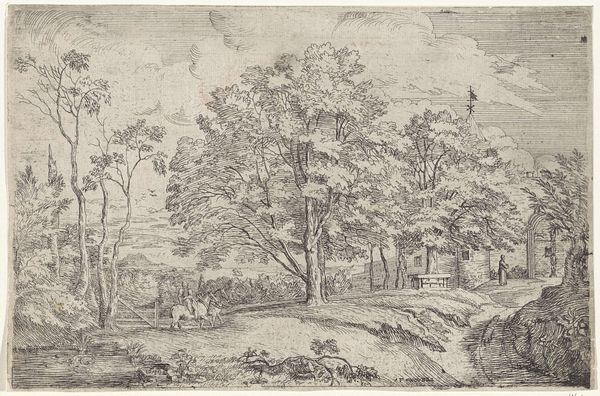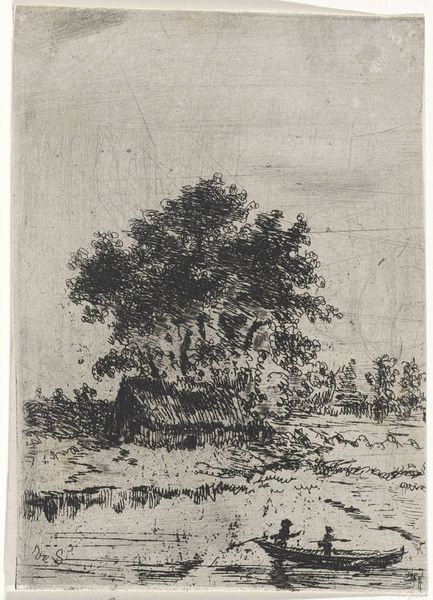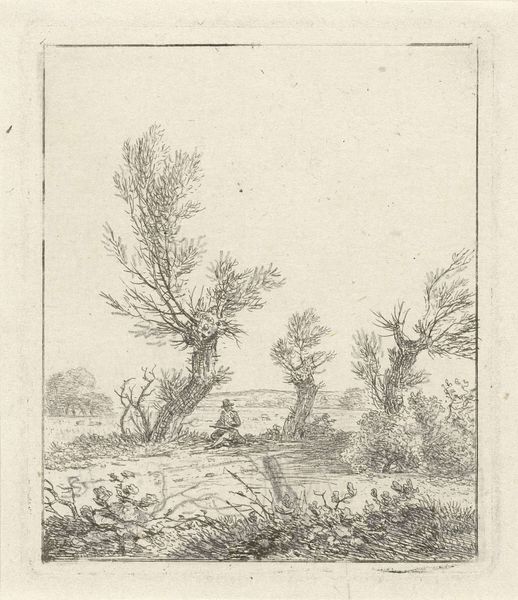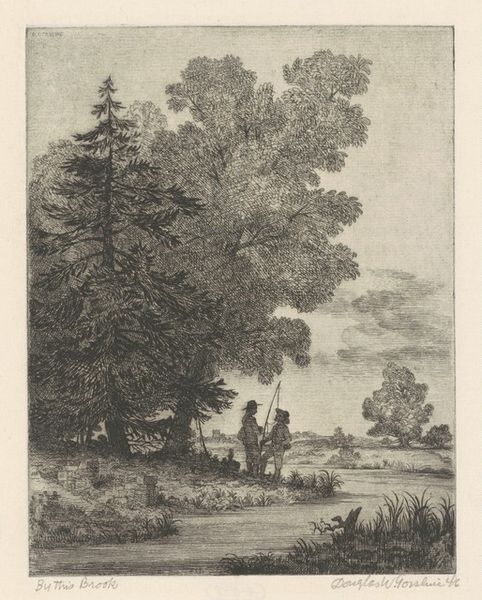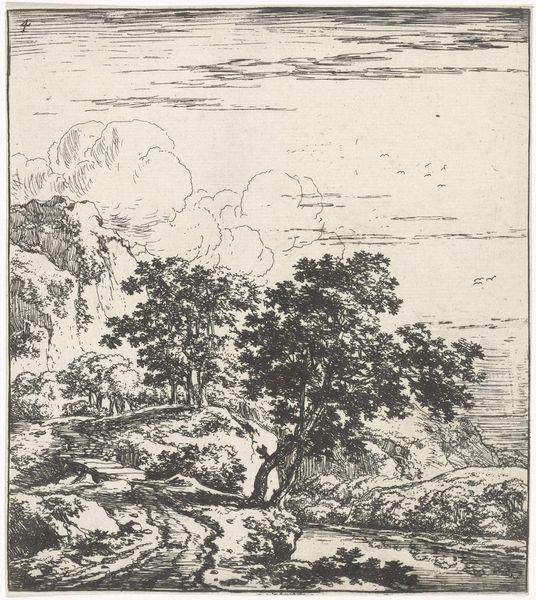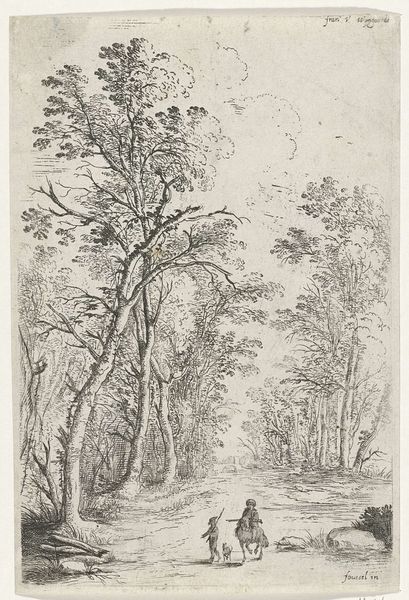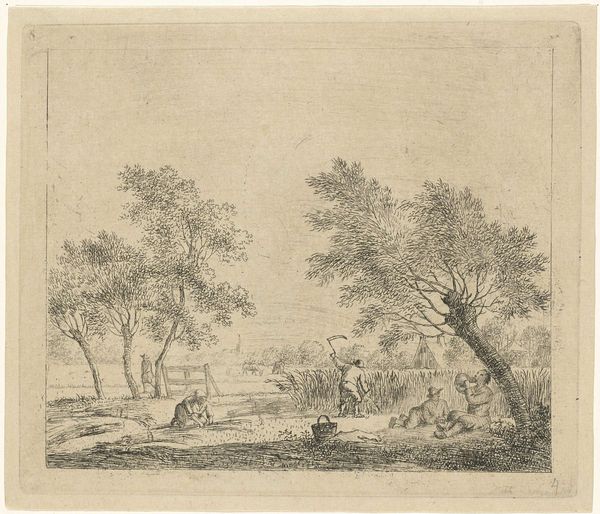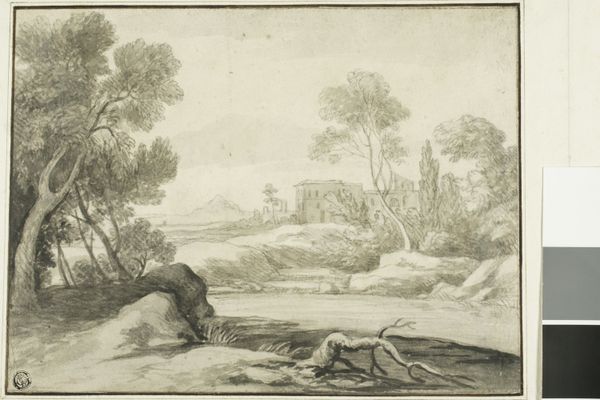
drawing, pencil
#
pencil drawn
#
drawing
#
dutch-golden-age
#
pencil sketch
#
landscape
#
pencil drawing
#
pencil
#
watercolor
#
realism
Dimensions: height 181 mm, width 162 mm
Copyright: Rijks Museum: Open Domain
Curator: Right now we’re standing in front of Roelant Roghman's "Wooded Coastal Landscape," likely created sometime between 1650 and 1657. It's a striking pencil drawing with watercolor, held here at the Rijksmuseum. Editor: My first thought? It's ethereally melancholy. The muted tones and bare trees, almost skeletal, evoke a feeling of introspection and perhaps a touch of loneliness. What do you make of that, curator? Curator: Absolutely. There's a serene stillness in it, even in the textures. Roghman masterfully uses the pencil to create depth, making it feel much larger than it is. It’s also thought that Roghman rendered many of these drawings on site. He captured an immediacy we can feel, centuries later. Editor: The trees do dominate—imposing symbols of nature's endurance, perhaps, in contrast to the transience of human life hinted at by the two tiny figures. And they do look lonely, don't they, huddled near the shore as if awaiting some unseen event. Curator: Indeed. Considering Roghman's place in the Dutch Golden Age, those figures could represent a kind of national identity finding solace and strength in their land. The sea often plays a powerful role. Here it appears calm, but we’re also constantly reminded of its potential power. It adds a layer of emotional intensity. Editor: The rendering feels very "realistic", doesn't it? Yet the landscape itself almost exists as a state of mind—or at least an idealized projection of nature as both provider and unyielding force. What is the actual significance of "landscape" art from a period that coincides with intense colonial activity? Are these just bucolic projections far removed from real historical circumstances? Curator: These questions help frame Dutch Golden Age art. They certainly existed alongside complex and colonial ventures that impacted global trade. Maybe the “realistic” landscapes that are captured can also be considered symbolic images of freedom, exploration, and mastery. We will never really know, of course, since so much has changed over time. Editor: Well, either way, the play of light is just beautiful—the way it dances on the water, filtering through the trees. A reminder of the ever-changing, enduring, quality of the landscape, but as a reflection of internal experience. Thanks for digging deeper with me into this mysterious landscape, curator. Curator: My pleasure. It’s truly a testament to Roghman’s skill that a simple drawing can hold so many layers of meaning.
Comments
No comments
Be the first to comment and join the conversation on the ultimate creative platform.
